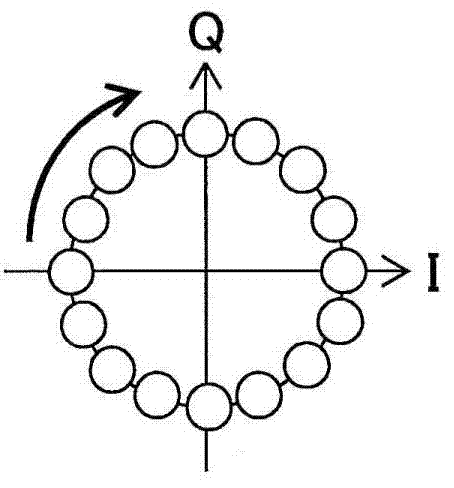Optical communication systems, optical transmitters and optical receivers
A technology of optical communication system and optical receiver, which is applied in the field of optical communication system and can solve problems such as inability to receive optical signals
- Summary
- Abstract
- Description
- Claims
- Application Information
AI Technical Summary
Problems solved by technology
Method used
Image
Examples
no. 1 approach
[0055] Figure 2A A single polarization (SP) QPSK optical transmitter 10A is shown in a schematic block diagram, Figure 2B A dual polarization (DP) QPSK optical transmitter 10B is shown in a schematic block diagram. image 3 A SP-QPSK optical receiver 20A is shown in a schematic block diagram, Figure 4 A DP-QPSK optical receiver is shown schematically.
[0056] Regardless of whether polarization division multiplexing is used or not, the structures and methods of the embodiments are applicable. Embodiments are also applicable to any modulation scheme (eg, multi-level amplitude modulation), not limited to QPSK. The method and structure of the embodiment are also applicable to the case of polarization division multiplexing ( Figure 2B and Figure 4 ) and the case without polarization division multiplexing ( Figure 2A and image 3 ). Therefore, the optical transmitters 10A and 10B are collectively referred to as "optical transmitter 10", and the optical receivers 20A a...
no. 2 approach
[0099] Figure 12 is a schematic block diagram of the optical receiver 40 according to the second embodiment. The configuration on the sending side is the same as that described in the first embodiment, for example, using Figure 2A The optical transmitter 10A. although Figure 12 The SP-QPSK optical receiver is shown, but the main operation is also applicable to the DP-QPSK optical receiver, and its description is omitted.
[0100] The modified part includes a receiving front end, which is connected to a coupler 53 that splits the optical signal, an optical-to-electrical (OE) converter 54 that converts the optical signal into an electrical signal, a power monitor 55 that monitors the optical power, and a controller (second controller )56, these components are added.
[0101]The received optical signal is split by a coupler 53 . One component is input to the 90-degree hybrid optical mixer 41 , and the other component is input to the OE converter 54 . The power monitor 55...
no. 3 approach
[0113] Figure 19 is a schematic block diagram of the optical transmitter 70 used in the optical communication system according to the third embodiment. In the third embodiment, a training pattern for frequency offset is inserted on the transmission side.
[0114] The optical transmitter 70 has a symbol mapper 71 , a training pattern generator 73 and a data combiner 72 . The training pattern generated by the training pattern generator 73 is combined with the output of the symbol mapper 71 at a data combiner 72 . The serializer 75, driver 76, and modulator 77 provided after the data combiner 72 have the same structure as those shown in the first embodiment and perform the same operations.
[0115] The training pattern generator 73 generates a pattern that enables the modulator 77 to output a continuous wave for a predetermined period of time and enables the receiver to detect a beat waveform. For QPSK, the same data with the same symbol is successively output.
[0116] Fi...
PUM
 Login to view more
Login to view more Abstract
Description
Claims
Application Information
 Login to view more
Login to view more - R&D Engineer
- R&D Manager
- IP Professional
- Industry Leading Data Capabilities
- Powerful AI technology
- Patent DNA Extraction
Browse by: Latest US Patents, China's latest patents, Technical Efficacy Thesaurus, Application Domain, Technology Topic.
© 2024 PatSnap. All rights reserved.Legal|Privacy policy|Modern Slavery Act Transparency Statement|Sitemap



